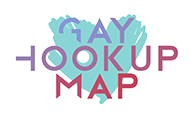Whether you are a busy guy looking for quickies or a sensitive one seeking BFE sessions, there is a site for you. You just need to find the right one that matches your kinks and expectations.
A new hookup website aims to reclaim the thrills of cruising from the prudish Grindrs of the app store. It is called Sniffles and it offers users a freak-forward user interface that strips down the decency rules.
Sniffles map
Unlike traditional dating apps that have you swiping left and right, the Sniffles map lets you browse potential matches in your area. It also gives you the option to chat with them before meeting up. Whether you’re looking for casual hookups or something kinkier, the app will help you find the right match.
Sniffies is the hottest, fastest-growing cruising and hookup app for gay, bi, and curious guys. The map updates in real time and shows nearby Cruisers, active groups, and popular meeting spots. It has built-in tools for discretion and anonymity, and is meant to inspire an exploration of your kinkiest fantasies.
While Grindr and Bumble are great for finding casual dates, Sniffies is the best option if you’re into kinkier stuff. Its latest feature, LivePlay, even allows you to video chat with other Sniffies Cruisers before you meet up. It’s a lot more fun than texting someone for months before hooking up! It also helps avoid the etiquette issues that plague other dating apps.
Travel gay map
Many of the heavy hitter gay hookup apps (Grindr, Scruff, Jackd, Planet Romeo) have begun to incorporate travel features. They can be useful for finding bars, saunas, clubs and hotels in LGBTQ-friendly areas. However, you should be aware of how you use these apps because in some countries like Egypt, the local gay community is underground for safety reasons and sharing the location of these spots online could put your life in danger.
Bob Damron began publishing a series of gay travel guides in the 1960s called “Damron Address Books.” These helped travelers find bars, cocktail lounges, bookstores, bathhouses, restaurants, and cruising sites that catered to queer people. While the books were invaluable, they also reflected coastal biases and a lack of understanding of the world outside of San Francisco and New York City. The Mapping the Gay Guides project aims to correct these gaps by turning the listings into usable visualizations. They offer insight into the changing geography of queer culture over time.
